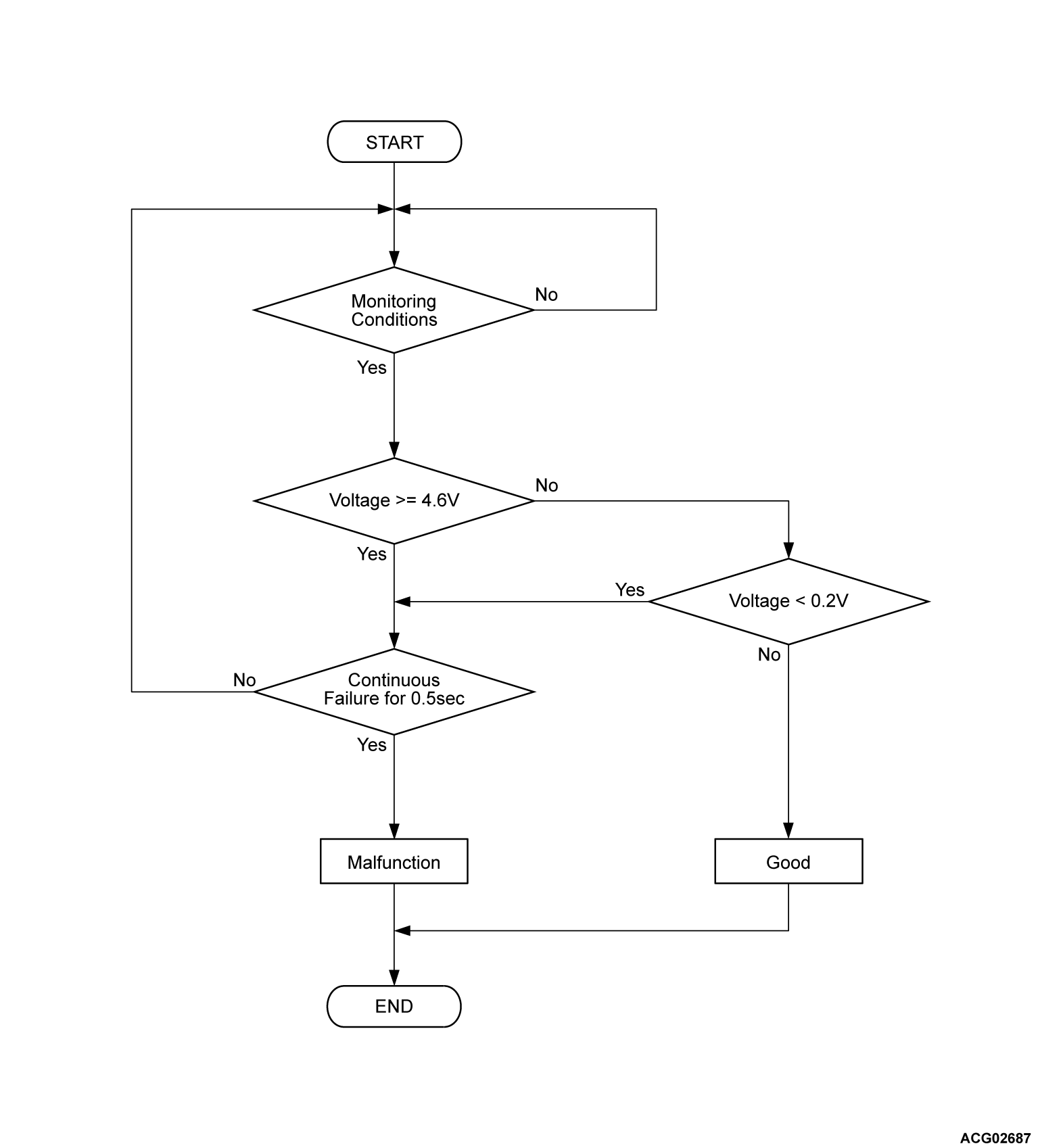DTC P0A02: Coolant TEMP.sensor circuit low
DTC P0A03: Coolant TEMP.sensor circuit high
DTC P0A03: Coolant TEMP.sensor circuit high
| caution | Before replacing the ECU, ensure that the communication circuit is normal. |
MONITOR EXECUTION
- Continuous
MONITOR EXECUTION CONDITIONS (Other monitor and Sensor)
Other Monitor (There is no temporary DTC stored in memory for the item monitored below)
- Not applicable
Sensor (The sensor below is determined to be normal)
- Not applicable
DTC SET CONDITIONS
Check Conditions
- The PHEV-ECU power supply voltage is more than 9.0 volts.
Judgment Criterion <DTC P0A02>
- The EV coolant temperature output voltage is less than 0.2 volt for 0.5 second.
Judgment Criterion <DTC P0A03>
- The EV coolant temperature output voltage is more than 4.6 volts for 0.5 second.
PROBABLE CAUSES
- Malfunction of the EV coolant temperature sensor.
- Malfunction of the EV coolant temperature sensor circuit.
- Malfunction of the PHEV-ECU.
DIAGNOSIS
Required Special Tools
- MB991223: Wiring harness set
- MB992006: Extra fine probe
STEP 1. Voltage measurement at EV coolant temperature sensor connector.
(1) Disconnect the EV coolant temperature sensor and measure the voltage at the wiring harness side.
(2) Turn on the power supply mode of the electric motor switch.
(3) Measure the voltage between the EV coolant temperature sensor connector (terminal WTS) and the body ground.
OK: 4.9 - 5.1 volts
Is the check result normal?
STEP 2. Check the signal line for damage, open circuit, short to ground circuit and short to power supply circuit (EV coolant temperature sensor connector and the PHEV-ECU connector).
Check the wiring harness between EV coolant temperature sensor connector and the PHEV-ECU connector (terminal WTS).
Is the check result normal?
STEP 3. Check the ground line for damage, open, short to ground and short to power supply circuit (EV coolant temperature sensor connector and the PHEV-ECU connector).
Check the wiring harness between EV coolant temperature sensor connector and the PHEV-ECU connector (terminal GWTS).
Is the check result normal?
STEP 4. Using scan tool (M.U.T.-IIISE), check the data list.
Check that the following data list display contents are normal (Refer to  ).
).
 ).
).- Item No.82: Water temperature sensor voltage
OK:
- Approximately 3.5 volts [at 0°C (32°F)]
- Approximately 2.6 volts [at 20°C (68°F)]
- Approximately 1.7 volts [at 40°C (104°F)]
- Approximately 1.0 volts [at 60°C (140°F)]
Is the check result normal?
STEP 5. EV coolant temperature sensor check
![[Previous]](../../../buttons/fprev.png)
![[Next]](../../../buttons/fnext.png)


